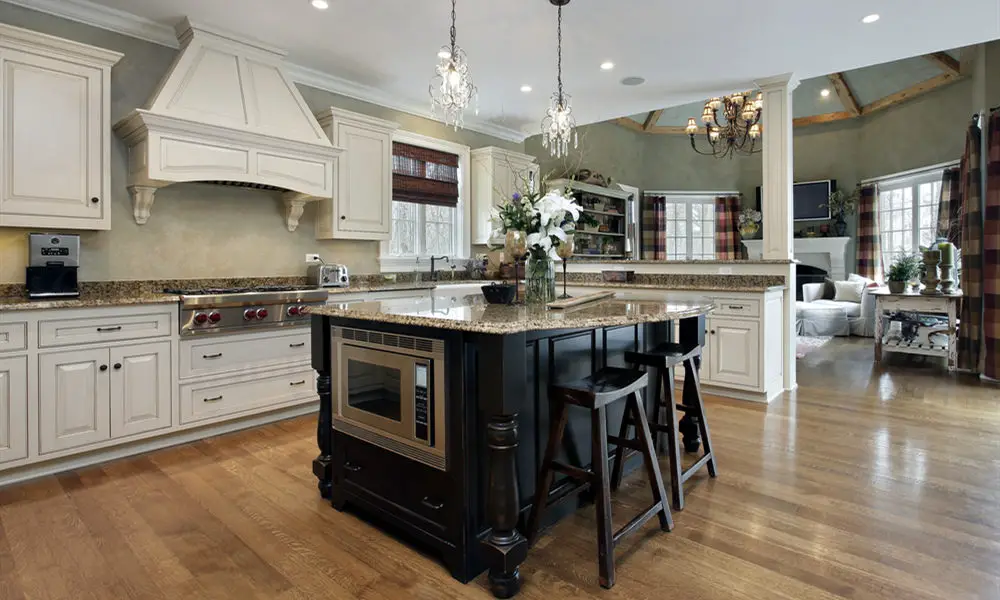You may already have design ideas in mind if you’re building a new kitchen or remodeling your existing one. But before you start picking out colors and fixtures, what does your kitchen layout look like?
Your first consideration when planning your ideal kitchen should be its layout. Sure, your kitchen should look stunning, so design matters. But functionality is equally as important, if not more. Your kitchen should allow you to do things efficiently, and your layout has a lot to do with that.
To help with your kitchen floor planning, here are 11 of the most popular kitchen layouts.
1. The One-Wall Layout
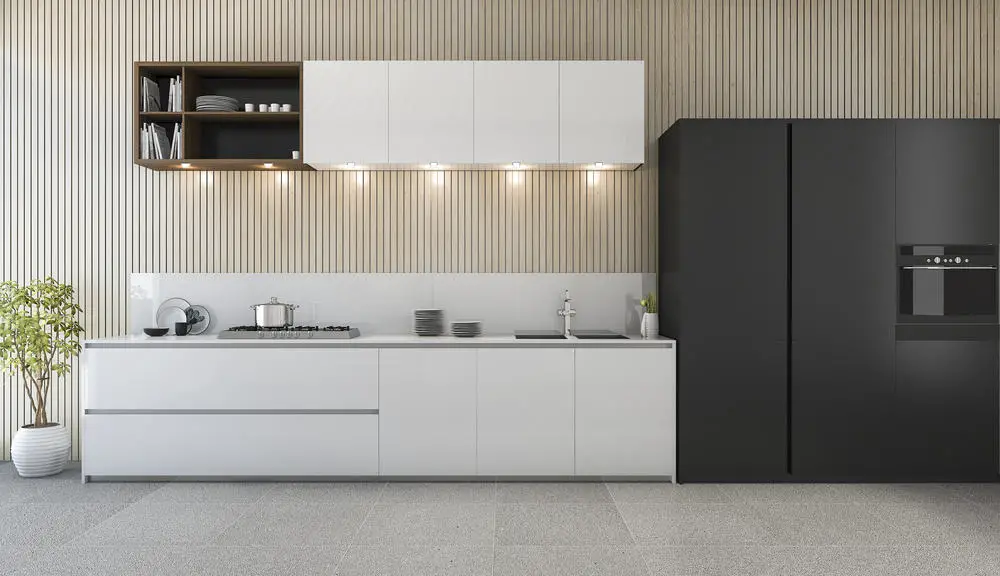
Also known as the single wall or inline kitchen, this layout is as its name implies. Everything you need in a kitchen, from your stovetop to your kitchen sink and cabinets, is located in one space.
Ideal for: Small or minimalist kitchens, such as apartment or loft kitchens.
Pros:
This kitchen layout works best in homes with spaces, as lining up everything on one side creates more space on the opposite side.
Everything you need is within arm’s reach.
Cons:
You may find the area full of clutter because of the limited space, especially if multiple appliances and kitchen utensilsline your countertop.
Design Ideas:
To maximize the limited countertop space, opt for integrated appliances, such as microwaves and coffee machines fitted into your cabinetry.
Install hanging racks on your backsplashes or small drawers in your cabinetry to hold your kitchen utensilsand kitchen knife sets instead of setting these on your countertop.
Try using roller kitchen islands or trolleys for extra storage and workspace.
To achieve a sleek look, especially for modern minimalist kitchens, choose induction cooktops. Also, they work as extra space when not in use -just make sure it’s turned off!
Position your dining table across your single wall kitchen to double up as an extra prep space.
To achieve a balanced look, try positioning your fridge on one end of your kitchen counters, and the pantry cabinet on the other.
2. The Galley Kitchen Layout
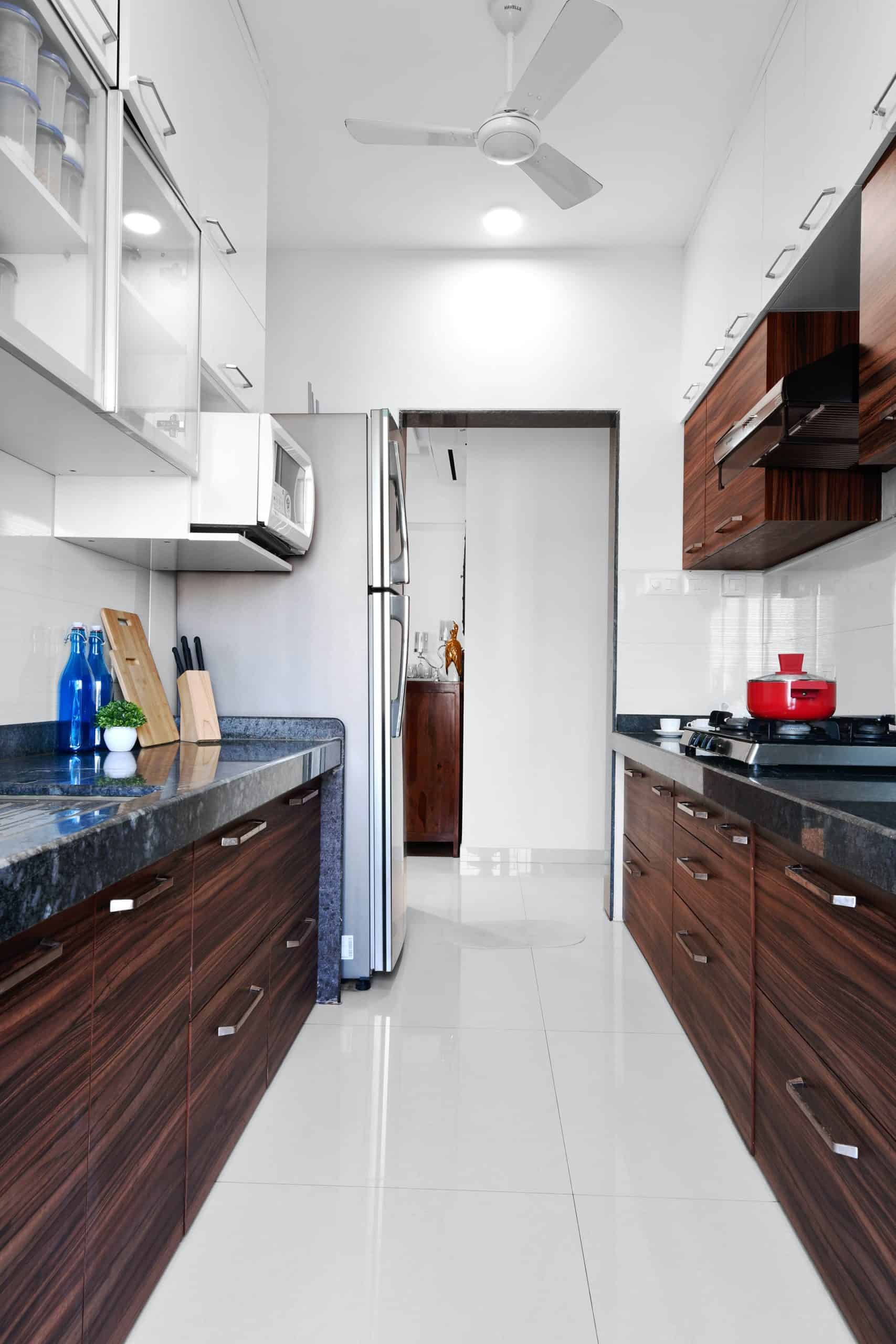
The galley is another kitchen layout that works best for smaller spaces. The distinct feature of this layout is its hallway shape. Galleys are usually characterized by two walls positioned across each other, or a wall and a countertop island on the opposite side.
Ideal for: Small to medium kitchens or narrow kitchen spaces.
Pros:
The galley is thought to be one of the most efficient kitchen layouts because cooking and prepping spaces are close to each other. You have your range on one side and the kitchen sink and worktop on the opposite side.
Cons:
If cooking in the kitchen is a family activity, this may not be the best layout for you because of the narrow workspace in between the two walls. The kitchen is limited to a functional space strictly for cooking rather than a place to social space where family and friends can hang out while preparing meals.
Design Ideas:
Make the kitchen feel less enclosed by opening up both ends of your galley hallway.
Just like the single-wall kitchen, opt for integrated appliances and smart storage solutions to maximize your space.
Keep the kitchen sinkand countertop on one side, so all the mess from prepping is contained on one side.
3. The L-Shaped Layout
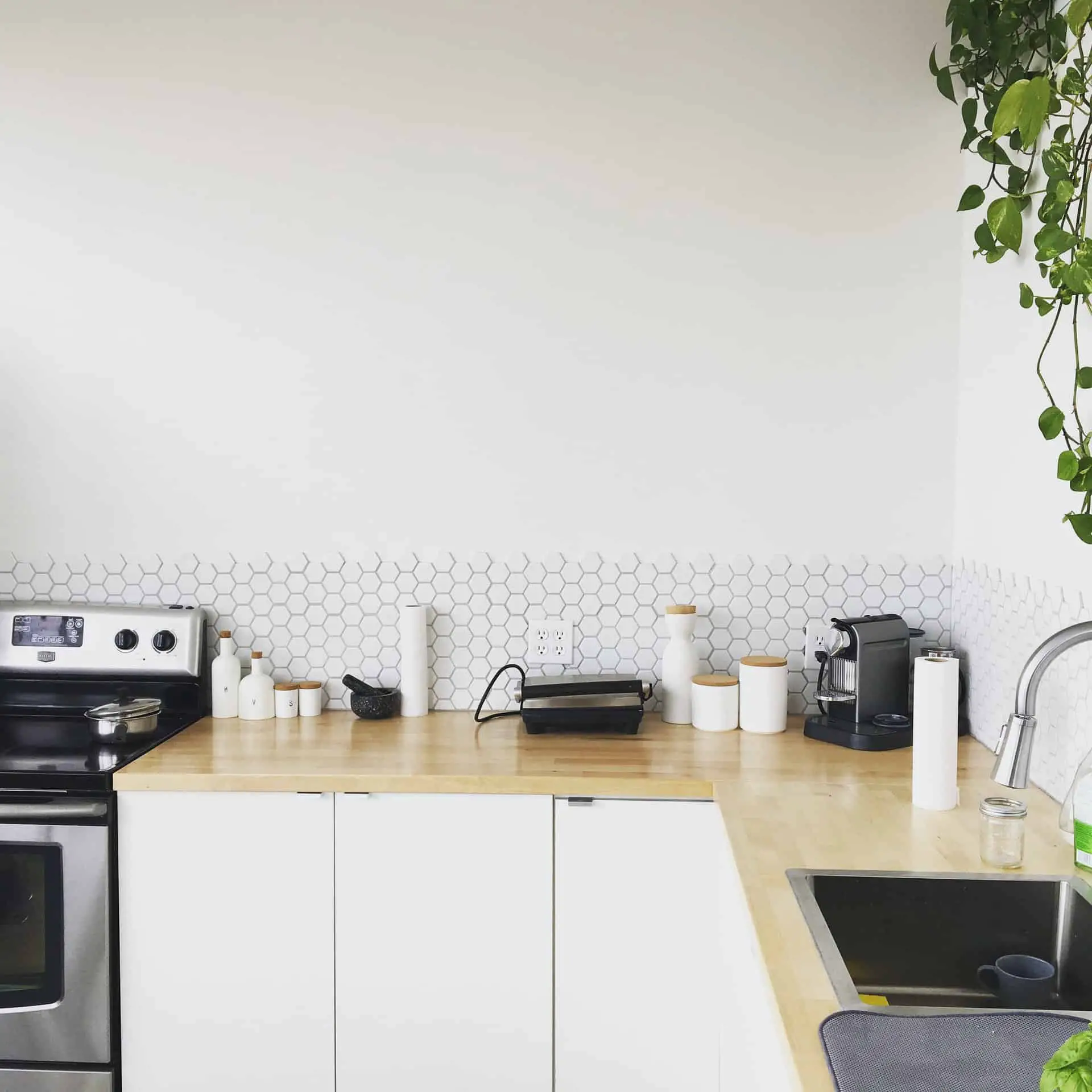
An L-shaped kitchen layout is characterized by kitchen worktops running across two adjacent walls, forming an L-shape, hence the name.
Ideal for: Small and medium kitchens.
Pros:
The L-shaped layout leaves an open center, allowing space for adding in a table or a kitchen island.
The layout allows for more than one cook can do the meal preparations without the risk of crowding.
The L shape restricts traffic into the kitchen area, so it’s the perfect option if you want to keep the kids away while you’re prepping. It’s also ideal if you prefer a bit of privacy when preparing meals, as the L feature separates it from the rest of the house.
Cons:
If the length of the workspace creating the L-shape is not adequately planned out, this can be an obstructive feature, making it a less efficient working area.
Efficiency may also be affected in more spacious kitchens, especially if appliances and features are spread out within the L configuration.
Design Ideas:
Maximize storage space by installing top cabinetry or open shelving.
If space permits, add a kitchen island or a small dining table in the middle to convert your functional space into a get-together area.
4. The U-Shaped Layout
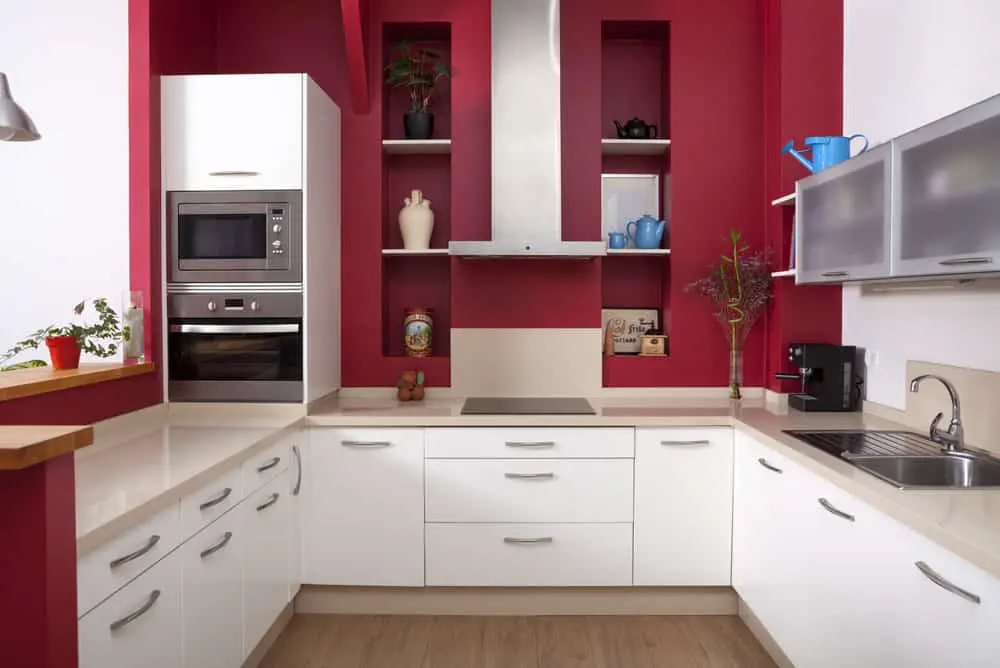
The U-shaped island resembles the L-shape, but with a third wall included, to create the U form. It’s also known as the horseshoe design and is also sometimes thought of as a larger version of the galley kitchen, but with one end closed off.
Ideal for: Medium to large kitchens.
Pros:
If you are after tons of countertop and storage space, the U shape maybe your layout of choice.
The open end of the U shape opens up the kitchen to the rest of the house, allowing traffic to flow freely.
Because it is a broader area than the galley type kitchens, it creates a larger working space, which is great when more than one cook is working at the same time.
Cons:
Although described as an advantage earlier, the U’s shape can also become a disadvantage. If you have a small floor area, it can make the room feel too enclosed and less spacious.
On the other hand, having work stations distributed too far apart can also be a problem of U-shaped layouts in large kitchen areas.
The U-shape creates lots of corners, which can be challenging when planning out your kitchen cabinets.
Design Ideas:
Make your kitchen appear more spacious by using light-colored cabinetry in U-shaped kitchens with a smaller floor area.
For larger kitchen spaces, strategically map out the positioning of your appliances and worktops, so you don’t have to reach or walk too far in between work stations.
5. The Central Island Layout
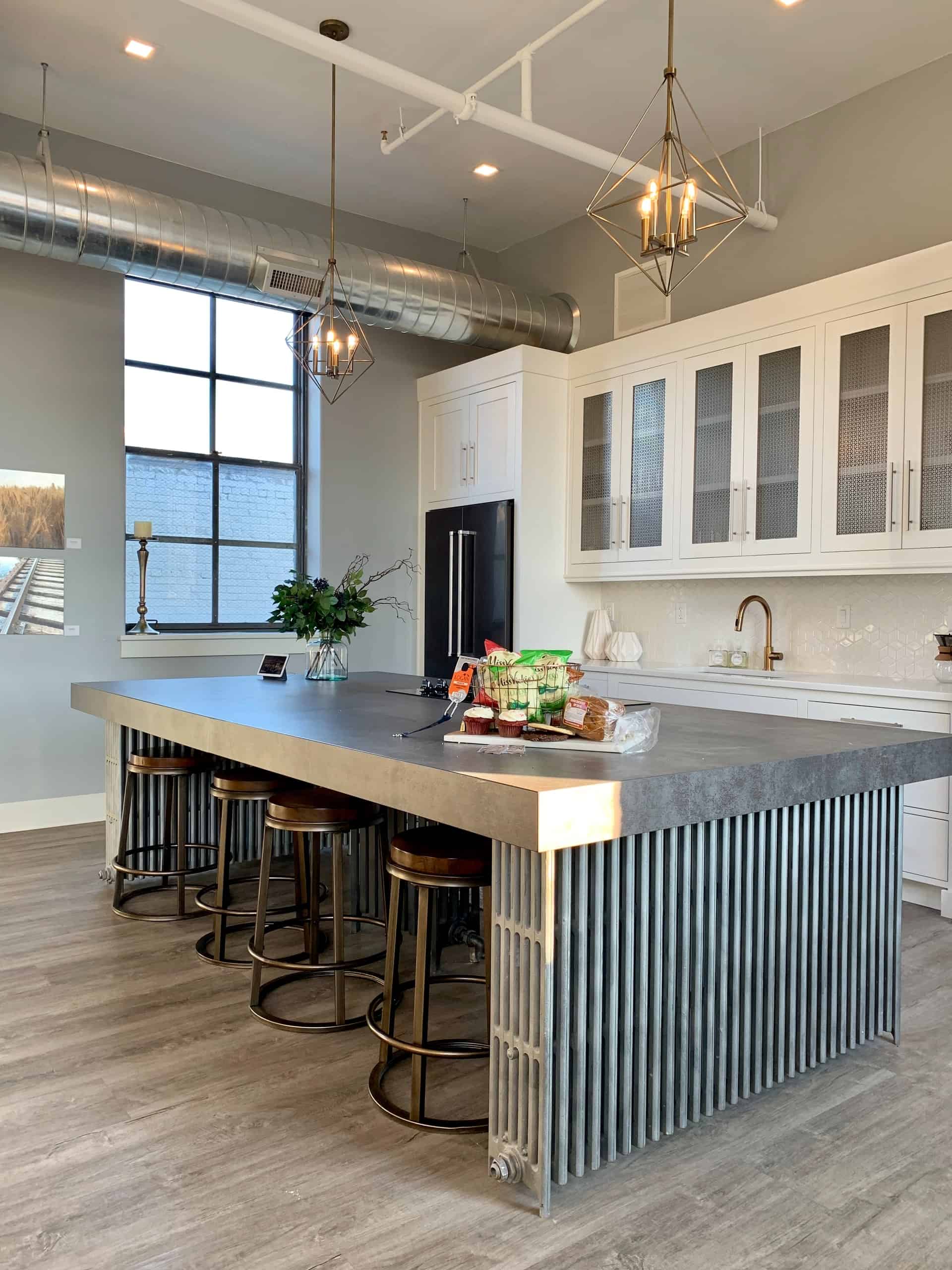
The island is a part of the kitchen that sits in the middle and can act as an extra functional workspace.
Ideal for medium to large kitchens. Kitchen islands are best for social kitchens – or when you love entertaining while preparing meals.
Pros:
The kitchen islands are versatile. They can house your stove or induction cooktops, your kitchen sinks, or be left bare to serve as extra workspaces or dining tables.
Because it is a broader area than the galley type kitchens, it creates a larger working space, which is great when more than one cook is working at the same time.
Cons:
Kitchen islands can take up a lot of floor space, making them unsuitable for smaller kitchens.
Islands may stand in your way while in the kitchen, potentially disrupting your workflow.
Design Ideas:
Use your kitchen island for extra storage. While the countertops are mainly used as work or dining spaces, use the foundation of the island as open shelves or enclosed cabinets.
If you want to use your kitchen island as the focal point for your kitchen, use a beautiful material, such as marble or quartz. Have your kitchen sinks integrated or installed undermount and select toned down kitchen faucet fixtures so this does not overpower your countertop material.
6. The Peninsula Kitchen Layout
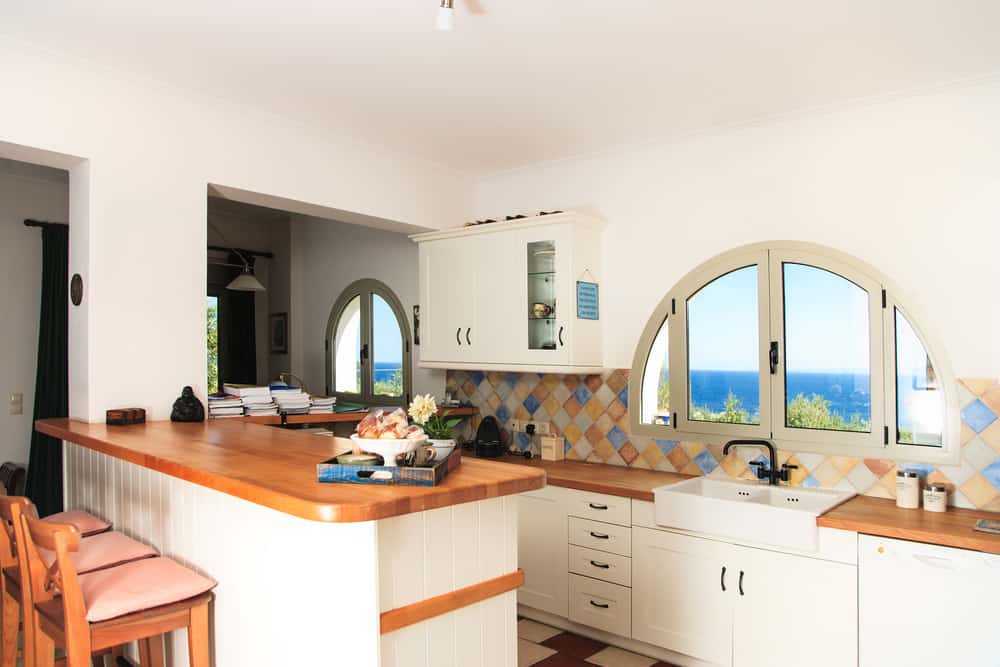
Like the actual peninsula, a kitchen peninsula layout is characterized by a kitchen island that connects to the rest of the kitchen. Basically, this makes an L-shaped design to somewhat of a U-shape, or can also turn a U-shaped scheme into sort of a G-shaped layout. The difference between a peninsula layout and a U-shaped layout is that the peninsula island is standalone and is not attached to a wall, unlike the U layout.
Ideal for: Small to medium homes. If you want a kitchen island but do not have much floor area to place it in the center, a peninsula layout may be the next best thing.
Pros:
Kitchen peninsulas add more space. It could be used as an additional counter for prepping meals or setting down appliances, or a breakfast bar. Cabinets or shelves can also be installed on the foundation for added storage solutions.
If you have an open plan space and want to define your kitchen further, a peninsula acts as the perfect room divider. It will instantly make your kitchen a separate area from the rest of the house.
Cons:
If improperly designed and laid out, a peninsula can create tight corner spaces, making it difficult for cabinet installations and access.
Peninsulas can also be obstructive and can limit movement within the enclosed area.
Design Ideas:
Create additional storage in your peninsula with doors that open from the outside the kitchen. By doing this, you create more kitchen storage solutions, with easier accessibility and eliminating a crowded area inside the peninsula.
7. The Two-Island Layout
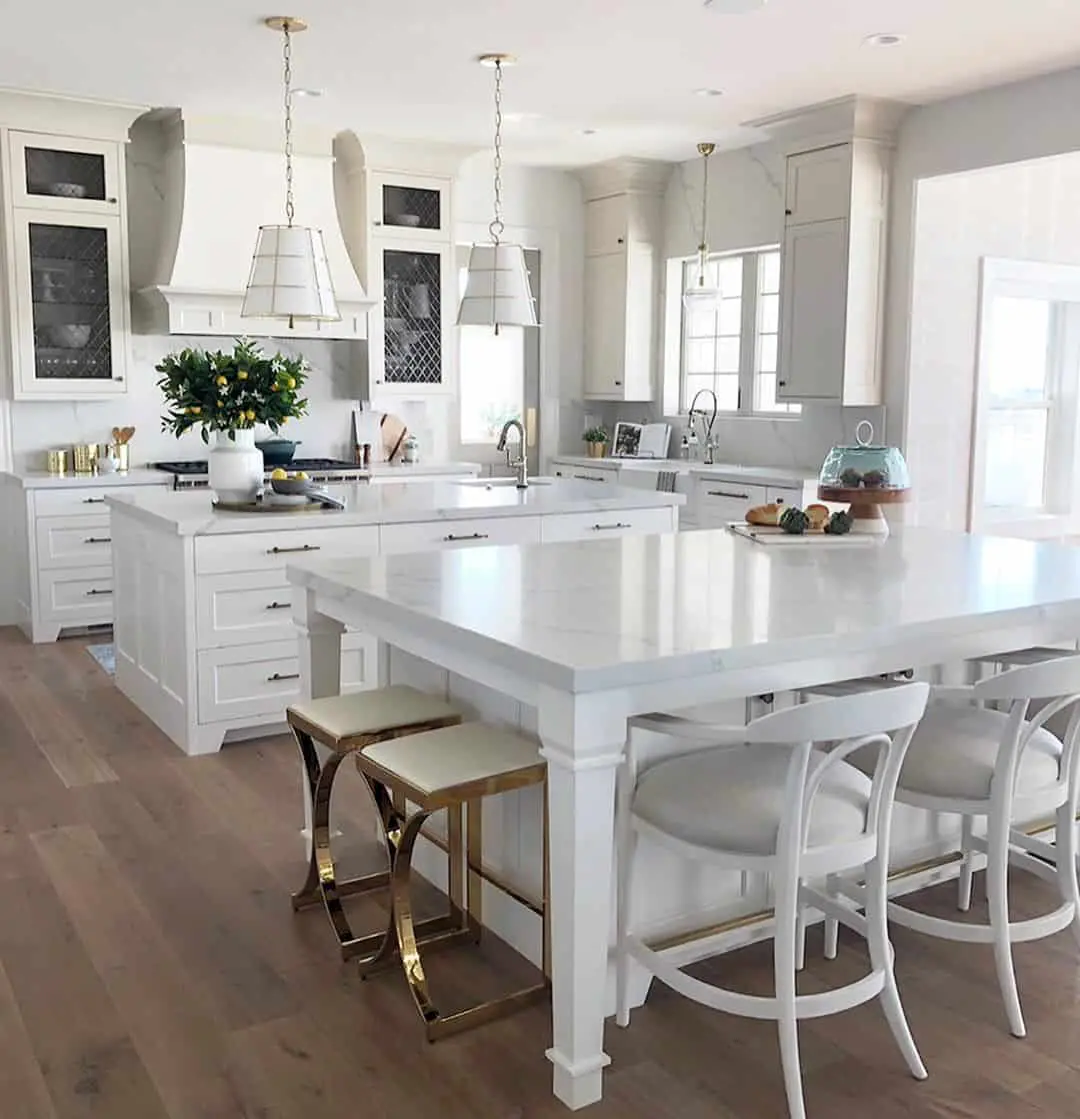
Yup, two-island kitchens have features as the name implies – two kitchen islands. The islands can be positioned either parallel to, or opposite each other.
Ideal for: Large kitchen floor areas.
Pros:
Two kitchen islands obviously provide you with twice as much counter space compared to having only one island.
The islands can serve as extra dining space or a buffet or grazing table, which is perfect for homeowners who love entertaining.
Cons:
Double kitchen islands can make open plan spaces appear busy.
They can also disrupt the continuity of your kitchen space, mainly if they are laid out parallel to each other.
Design Ideas:
Use the two islands to streamline your prepping and cooking efficiency. Install one or two kitchen sinks in one of the kitchen islands to wash and clean both food and kitchenware. You can also install a dishwasher and integrated garbage disposal units on the same island. For the other island, leave the countertop clear to use as a dining space or prep area.
8. The Kitchen Work Triangle Layout
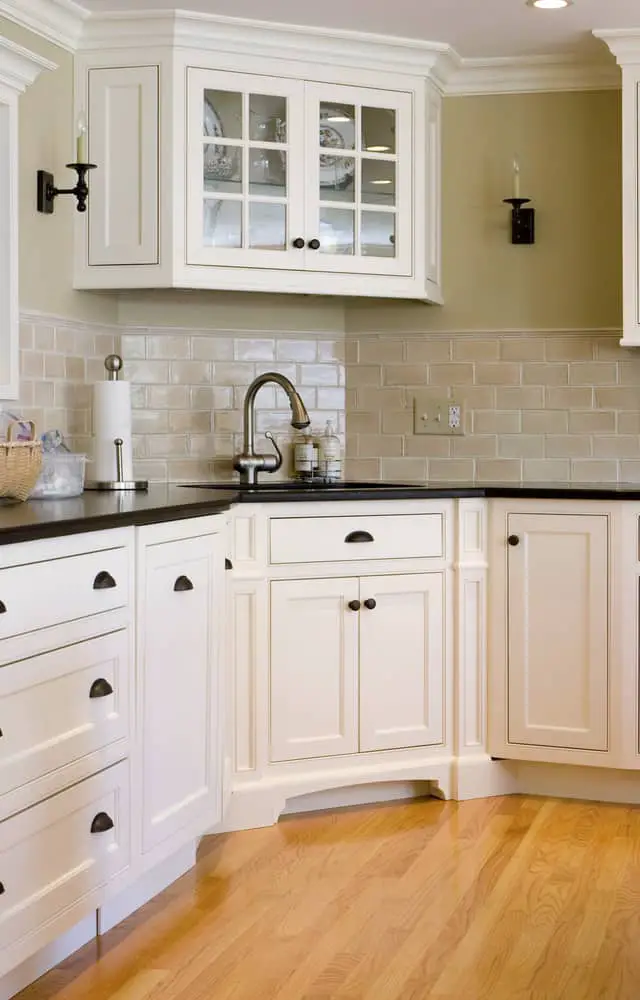
The kitchen work triangle is a well-known, classic 90-year-old theory in kitchen layouts. This theory runs around the thought that kitchens are more efficient to work on if the cooktop, kitchen sink, and fridge are close together, essentially creating a triangular pattern.
Ideal for: Small to medium kitchens.
Pros:
If you’re responsible for preparing for and cooking the meals, you may find that the work triangle layout is such a breeze to maneuver around in.
Cons:
The working triangle may be counterintuitive in more spacious kitchens or in kitchens with a center island. You may find that you will take more time doing your prepping and cooking as you have to walk a few steps from one triangle element to another.
Design Ideas:
If you have a more spacious kitchen but like the idea of the kitchen work triangle, place one of the elements onto your kitchen island. For modern kitchen designs, choose induction cooktops or undermount kitchen sinks on your center island for a sleek and seamless integration.
9. The Functional Zoning Layout
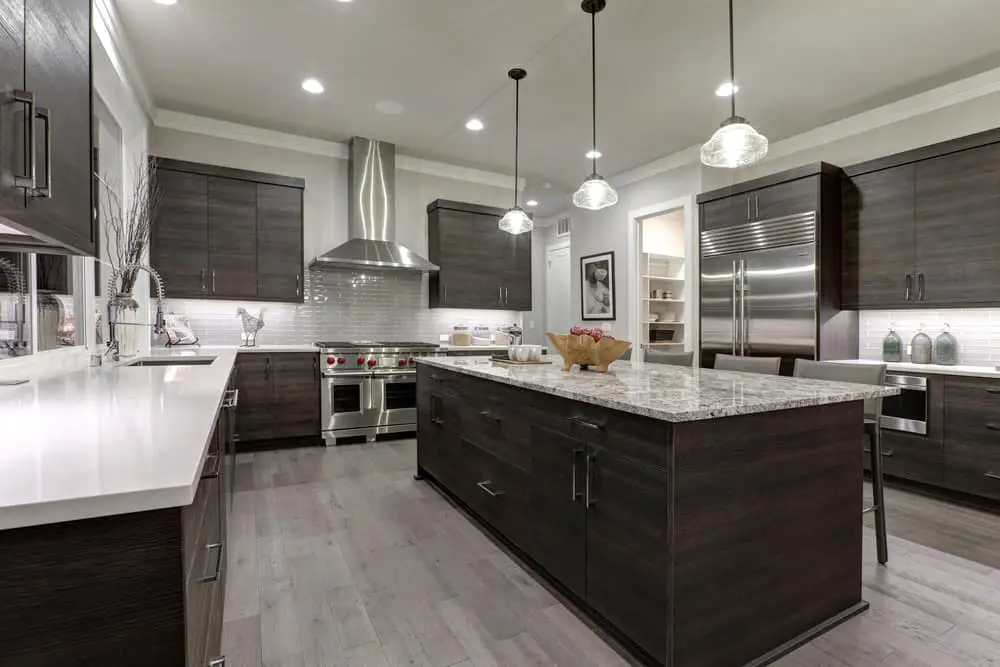
Ideal for: Large kitchens.
Pros:
If more than one person is preparing and cooking for the meals, a functional zone allows them to work in separate areas, without being in each other’s way.
Cons:
There will almost always be overlap in the zones, and you can’t truly have one zone to serve one exclusive function. For example, you can install a kitchen sink on your kitchen island as a cleaning zone. Still, the countertop can easily be used as a prep and the island structure as a storage zone.
Design Ideas:
Keep functional elements as close to each other as possible. For example, have the cooking zone near the prepping area and position the kitchenware storage zone near the dishwashing or cleaning zone.
10. The L-Shaped with Island Layout
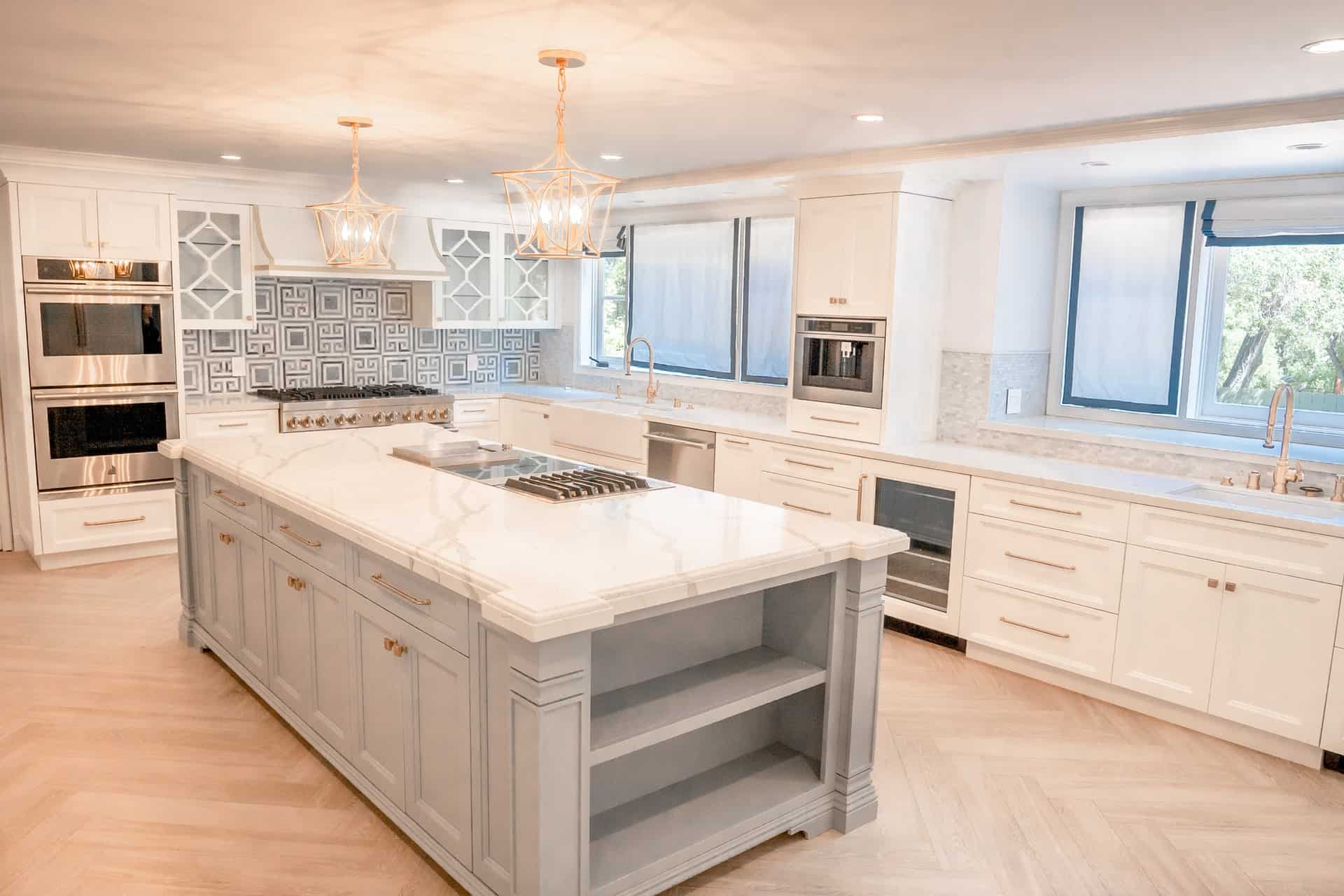
The L-shaped with an island is an upgrade on the traditional L kitchen layout, with the addition of a kitchen island in the middle. This layout is ideal for kitchens with large floor areas.
11. The U-Shaped with Island Layout
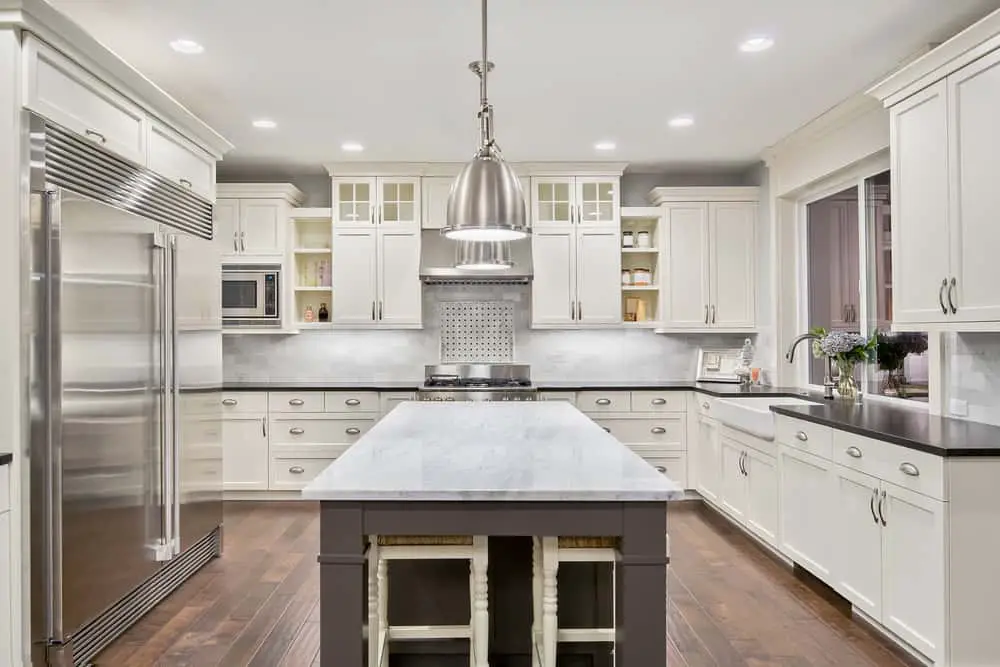
Like the L-shape upgrade, the U-shaped with island layout is the upscale version of the basic U-shape, thanks to the addition of a central kitchen island. Because of the space required, this layout also works best with large kitchen spaces.
Summary
When considering kitchen layouts, choose one that best fits your entire house’s floor plan. Go for the setup that best meets your kitchen needs, based on the time and type of activity you spend in the kitchen. Remember, design makes it beautiful, but the layout makes it functional.
